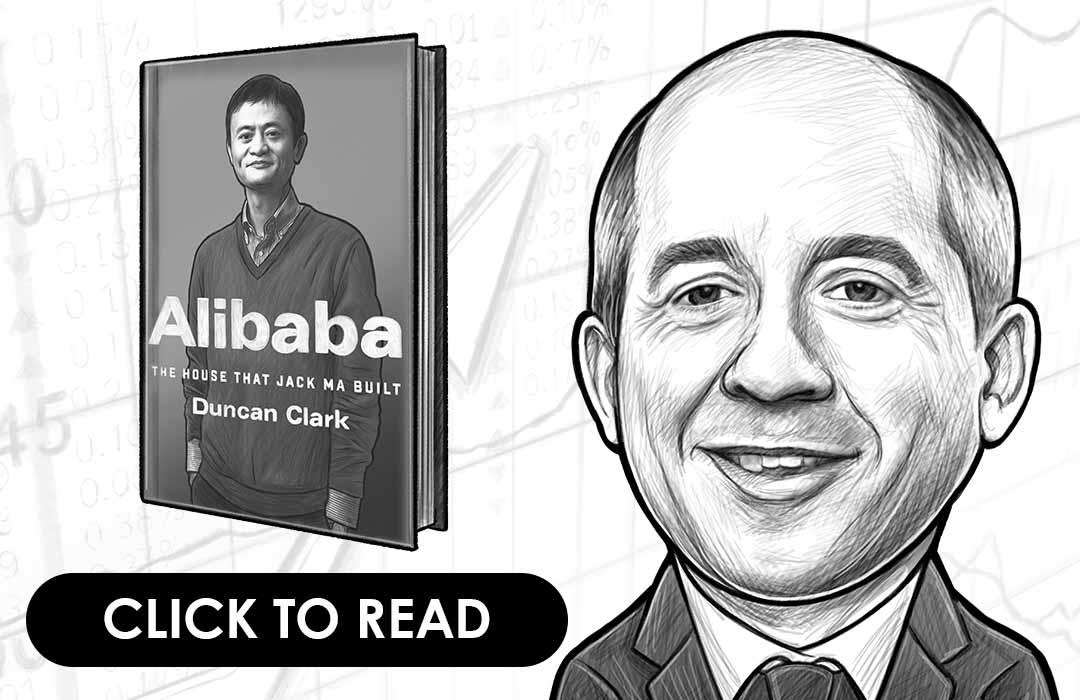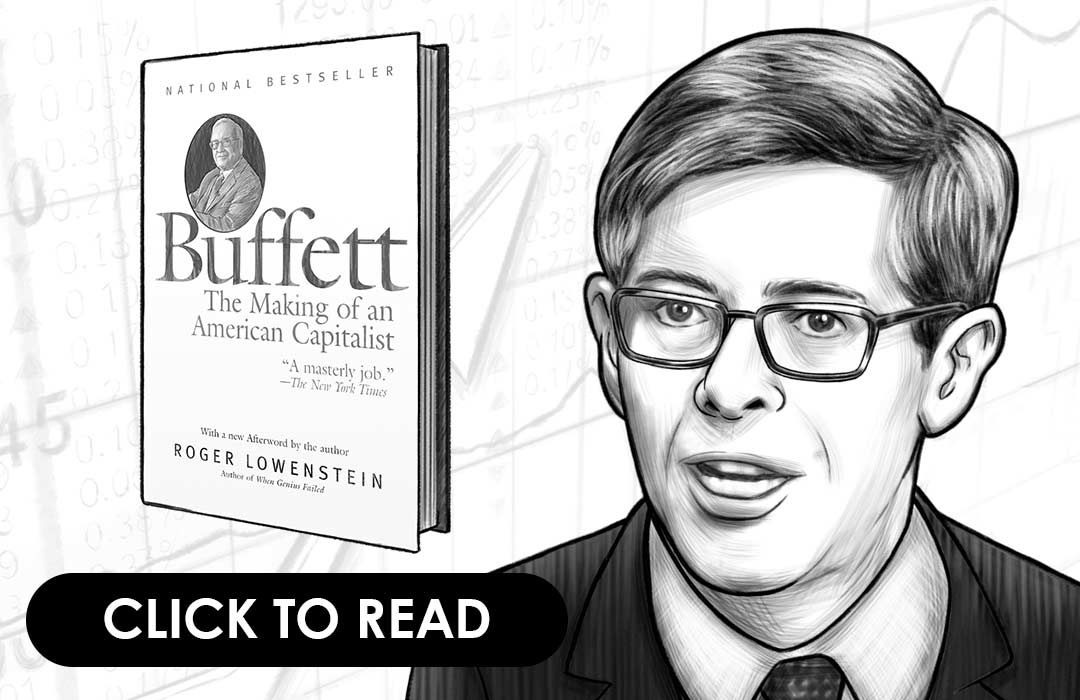An Executive Summary Of The Age Of Cryptocurrency
How Bitcoin And Digital Money Are Challenging The Global Economic Order By Paul Vigna And Michael J. Casey
PRESTON AND STIG’S GENERAL THOUGHTS ON THE AGE OF CRYPTOCURRENCY
The ideal behind Bitcoin is amazing. Everyone in the world is granted the access to an account, and since there’s no intermediary like banks, it’s a cheap and transparent payment system to benefit all citizens. I have never really questioned the traditional monetary and banking system before reading this book – I do now. I see why there is a need for new systems, especially in the developing world where 2.5 billion people don’t have access to a bank account. That said, I wonder whether Bitcoin can transform into a leading global currency. As I see it, it’s basically a question of trust. Before we trust a new monetary and banking system more than the traditional one, we won’t see any change, and above that, it’s really a question of whether Bitcoin can offer security of payment for the long run.
PREFACE OF THE AGE OF CRYPTOCURRENCY
Bitcoin, the elusive, mysterious cryptocurrency grabbed headlines all over the globe a few years ago. Bitcoin enthusiasts swear by the currency and claim that it can be used to buy anything, including a car or coffee and pretty much anything that can be bought using real money. Although Bitcoin is also used for many nefarious activities by people all around the globe, many experts say that it’s here to stay.
Paul Vigna and Michael J. Casey have outdone themselves by writing this fantastic book that answers many questions about Bitcoin. Although Bitcoin has gained publicity like none other, very few people understand how it works and what it really is. Fortunately, the authors have explained the complexities and say that while cybermoney is all set to begin a revolution, it’s now possible for people to reinvent social and financial traditional structures.
Get smarter about valuing businesses in just a few minutes each week.
Get the weekly email that makes understanding intrinsic value
easy and enjoyable, for free.
CHAPTER 1: FROM BABYLON TO BITCOIN
Any form of currency can be viable only if it wins the absolute trust of the people or community using it. Whether it’s the dollar or Bitcoin, it will work only if the people believe in it. Sure, Bitcoin has become immensely popular, but will people trust it and pour their life’s savings in it to make more money? Well, only time will tell, but for that to happen it must first become money and has a long way to go.
In this section, Mike Casey talks about his experience in Argentina that had made him anxious and nervous. Argentineans, thanks to their history, don’t trust their own currency and people have a general distrust when it comes to dealing with anything that has to do with their financial system. Although Mike sold his apartment that was located in Buenos Aires, he faced problems while taking that money out of the country. Since he didn’t have many choices, not to mention the enormous transaction fees charged by the banks, he was forced to complete the deal in Buenos Aires in an unconventional manner. Most Argentineans didn’t trust the banking system and ironically, according to them, it wasn’t safe. Finally, he did receive the money but the experience taught him about the precarious link between money, trust and the outrageous fee system used by traditional banks in developing countries.
It’s imperative to develop trust to run any kind of monetary system and Bitcoin’s major hindrance lies in the fact that it doesn’t have many people believing in its value. If you deposit a dollar in your bank, the bank owes you the value of that particular dollar, but the value can be determined only when the people believe in it. Anything monetary, whether it’s gold or the dollar or Bitcoin becomes currency only when people agree to it and if Bitcoin successfully builds that trust in people, it won’t take a lot of time for it to really become money.
CHAPTER 2: GENESIS
On October 31, 2008, hundreds of members that consisted of cryptography enthusiasts and experts received a mail from an unidentified person named Satoshi Nakomoto. This man remains unidentified even today, but back then, he proclaimed that he had developed a currency known as Bitcoin. He stated that it was an online exchange that used encryption and allowed two parties to trade tokens of value without divulging any information about their accounts or themselves. There was no need of a middle man or payment processors or credit-‐card companies to make transactions and understandably, it seemed preposterous to anyone who read the email.
Transactions could take place when an individual used a private, secret code to authenticate a key that was attached to a store that held the currency. This meant that anyone who owned or had access to a computer could gain entry into the network. A major advantage held by Bitcoin was that it boasted of a system that was completely honest because it relied on mathematical calculations that couldn’t be violated.
Nakamoto had also set up his website and created the genesis block that was the first block of Bitcoins. During that time, he generated several Bitcoins but they would be worthless if he couldn’t get others to join. It was like Graham Bell inventing the phone. Who should he call? He did face a lot of problems but once he timed the release of Bitcoins in blocks that contained 50 coins each, it would create a scarcity since they would reduce over time. However, to accept it as a currency, it needed to have a value and the community decided to rate it at $1 for 1,309.03 BTC. Anyone who had access to a computer could mine the coins but if they weren’t interested to do it, they could simply trade it amongst themselves. As soon as Bitcoin was introduced, the price leapt by 70 percent and 1 BTC was equivalent to 0.14 cents as on November 2013. It plunged back down again and if you’ve noticed the trend carefully, you’ll know that the volatility continues even today.
CHAPTER 3: COMMUNITY
The Bitcoin community had also formed a forum and on December 12 in 2010, Satoshi Nakomoto posted a message: “There’s more work to do on DoS [denial of service], but I’m doing a quick build of what I have so far in case it’s needed, before venturing into more complex ideas. The build for this is version 0.3.19.” That was his last message and even after many people including journalists have tried to track him down, he remains untraceable because his communications were always encrypted and his personal information was never divulged.
While he remained in touch with some software developers who were in charge of maintaining the Bitcoin system, he stopped communicating with them after April 2011. With no more information and Satoshi Nakomato leaving everyone high and dry, one would think that the system would collapse, but unbelievably, it arrived like a force more than ever before. The price that was only 0.14 cents kept rising enormously because of the true believers in Bitcoin. One major reason for the rising popularity of Bitcoin is that it’s a decentralized system with no owner. Compare this to PayPal that is owned by Ebay and is designed to make a profit.
The trajectory of Bitcoin took a wild turn when a man named Laszlo Hanyecz, a coder, posted on the forum saying that he would buy two pizzas for about 10,000 BTC, which was worth $41. The forum, with only about 230 members, didn’t respond initially because Bitcoins hadn’t been used ever in the real world yet, but after a couple days a man in England stepped up and placed the order by paying for it through his credit card. It was the first time BTC was ever used as real currency and if you look at what Hanyecz spent in 2010 and compare it with the BTC price in August 2014, the pizzas cost him a whopping $5 million! Slowly, Bitcoins were being accepted and although nobody knows who Satoshi is, the community has worked hard to make Bitcoin an acceptable form of currency.
CHAPTER 4: ROLLERCOASTER
We exist in a world where everything is simple and uncomplicated. We now pay for everything through our credit cards because we simply can’t go through the hassle of going to an ATM every time or carrying cash around everywhere. However, there are extra costs for every transaction and there are middlemen whenever you complete a transaction. The company you’ve paid has to recover those costs and banks have made humungous amounts of money for a long time through all these transactions. But, how would the economy change if some cryptocurrency reduces those disadvantages and makes everything transparent and clear while eliminating the transaction costs?
In 2013, many retail businesses began to notice the advantages offered by cryptocurrency and since it boasted of a system that involved faster payments, it became apparent that the advantages were simply too difficult to be ignored. And why would they ignore it anyway? If cryptocurrency reduced a merchant’s dependency on a bank that charged hefty transaction fees, it made sense to the retailers to get into a deeper understanding of how cryptocurrency worked. Although it seems hunky dory for a retailer, it doesn’t make a difference to the shopper or the customer, unless the retailer decides to reduce the cost of an item because he saved money in transaction fees.
Although Bitcoin has several hard-‐core advantages, it does have numerous disadvantages as well. For instance, if you pay someone through your credit card and find out that the transaction was faulty or worse if someone sold your credit card, you’re still safe because the bank will always come to your rescue. However, with Bitcoins it’s completely different. Once you send the money, it’s gone and that’s about it.
You’re also at the risk of losing all your coins if you somehow lose your private key – which is possible – and all your hard work is for naught since there’s no way for you to get those coins back. However, now there are several security measures being added in the Bitcoin system, and when compared to credit cards, Bitcoins are still valuable because nefarious hacking activities are possible even with credit cards. Some Bitcoin wallet applications allow people to put their coins in a virtual vault – allowing a time delay and notification service to the owner when funds are removed.
CHAPTER 5: BUILDING THE BLOCKCHAIN
One of the biggest threats to Bitcoin system is the fact that you can always run into a phenomenon called ‘Double Spending’. For instance, if you make a transaction, how do you know that the individual who sent it to you hasn’t sent a copy of it to someone else? Since you can’t check or touch the magnetic strip or physical fiber or the watermark like you do with paper currency (the green bills we all love!), it’s not possible to figure out if it’s a genuine transaction. However, Satoshi solved this by coming up with a decentralized system where the block chain acts as a ledger and keeps records of every transaction that occurs. Now, this is the biggest advantage to owning Bitcoins.
The block chain is the core of Bitcoin’s system and it’s transparent and clear since you can see every transaction in the records as they are public. With your private key, you can make any transaction you want and the blockchain will keep those records for you. In other words, it works as a ledger that keeps records minus the transaction fees! As long as the system continues to operate, the block chain will continue to update itself. The blockchain is, in fact, a huge chain that consists of several blocks of transactions that occur at a particular time period. It creates a time-‐stamped chain of receipts and expenditures among every single participant of Bitcoin system and with such irrefutable proof, it’s not possible for anyone to cheat someone or indulge in double spending.
CHAPTER 6: THE ARMS RACE
Bitcoin has come a long way and you can’t ignore the mining that comes along with it. Earlier, when Bitcoin hadn’t gained so much of popularity, it was relatively easy for miners to mine coins but now it has become increasingly difficult. The machines – or ‘rigs’ as they called – are powerful graphic cards or GPUs that are much more powerful than your usual CPU. The race to mine Bitcoins began when Laszlo Hanyecz realized that his GPU was about 800 times faster than his CPU and when the other miners realized this, they began to mimic the same action.
However, the race became so heated that many companies that sold mining machines were being sued by their customers since they struggled to keep up with the demand. Some of those companies also went bankrupt and although the customers had to wait for a minimum of 6 months to get the machine delivered and spend $6,000 to buy the machine in the first place, the rat race continued. Many of the mining manufactures such as CoinTerra have started mining coins themselves and interestingly, cloud hashing is also rampant nowadays. With Bitcoins becoming increasingly scarce, the miners continue to mine, irrespective of the high electricity costs they endure every month.
CHAPTER 7: SATOSHI’S MILL
There are many people who are completely awed and consequently support Bitcoin, but there are others who aren’t so charmed. The problem lies in the fact that they aren’t convinced with the intrinsic value of Bitcoin system. It seems like a gambler’s paradise for many people, but others who believe in it aren’t shying away at all.
To emphasize their point, the authors have described how enthusiasts in the Silicon Valley are preparing themselves for Bitcoin era. In fact, Bitcoin owes its growth to several young geniuses who seemed disgusted by the current financial system and while that’s easy to understand, it’s difficult to understand how Bitcoin boom occurred. Venture Capital also seems to be encouraging many startups that revolve around the BTC and though the value fell down from $1,151 in 2013 to less than $500 in 2014, many people believe that this is just the very beginning. Although several skeptics question the entire system and argue that it’s just a bubble, individuals like Marc Andreessen, the Netscape founder, hasn’t wasted any time to get involved in Bitcoin apps and exchanges.
CHAPTER 8: THE UNBANKED
In this section, the authors state that there are about 2.5 billion people without bank accounts in the world. With no access to banks, they can never even think of a savings account, never mind a credit card or a checking account and are totally cut from the financial system that’s literally at our fingertips. Such people are known as the unbanked and many Bitcoiners hope to help those people by introducing them to Bitcoins. Think about it. How wonderful would it be if those people could enjoy a bit of financial freedom just like us? In addition, it’s not only a question of access to a bank account. Many countries do not allow the access to foreign currency for their citizens. A problem that can be solved too with Bitcoin.
Whether it’s Argentina or Pakistan or Mali, people there desperately need a financial system that allows them to receive and send money without paying the enormous fees the banks charge them. If it’s 5-‐9% as transaction fees, it matters a great deal for these people and therefore, many companies such as 37 coins, Volabit, BitPesa and M-‐Pesa have introduced mobile money where any individual who owns a basic phone with internet access can do some transactions on their own. While skeptics argue that there’s no point in the banks helping illiterate people who don’t understand how to handle sophisticated, dazzling telecommunication systems and have no clue about financial transactions, these two arguments pave the way for Bitcoin’s adoption because it doesn’t require anything more than the internet and of course, the wallet.
CHAPTER 9: THE EVERYTHING BLOCKCHAIN
In this segment, the authors talk about the future of Bitcoin. Apart from the fact that it has been helping the unbanked in several poor countries, Bitcoin has advanced to a level where intelligent entrepreneurs can absolutely do anything with it. Thanks to its decentralized, transparent system, Bitcoin is being used by many people because of its legitimacy. Bitcoin made a big furor when it hit the mainstream market and though it seems to have died down a bit now, we mustn’t get ahead of ourselves because it’s only for the beginning of a Bitcoin era.
Since Bitcoin transfers all the powers in the hands of the middlemen, there are arguments that it could begin replacing humans in the future. For instance, take Mike Hearn’s case where he runs a taxi service with a single car that transports people safely, whenever they want. The only difference between this service and the others is that it’s driverless! The car is actually run by a computer program that takes care of the fuel and everything else necessary to run a taxi! Arguably, the idea is brilliant, but in introspection, this could mean drivers losing their jobs in the future due to these computer-operated cars. In addition, things aren’t looking bleak not only for the drivers, but if Bitcoin 2.0 runs successfully, you can soon expect lawyers, stockbrokers and bankers to be replaced my machines too. Of course, the thought itself is scary but the authors are only talking about what Bitcoin can really do if it’s unleashed.
CHAPTER 10: SQUARE PEG MEETS ROUND HOLE
In this section, the authors analyze the issues that could be created when one uses Bitcoin. Granted, Bitcoin is a force that could probably replace many banks and other financial systems in the future, but how trustworthy is it? Since it’s completely decentralized along with open source software, it remains vulnerable under the watchful eyes of many hackers. The open source software is maintained by just a group of five people and to make things even worse, three of them work only part-‐time! Gavin Andresen, the man who somehow manages an $8 billion economy was appointed by Nakomoto himself because of his calm, reassuring demeanor. However, understandably, he attests to the fact that it can be extremely stressful at times to manage everything.
Bitcoin doesn’t have any middlemen to eat up your transaction fees coupled with other additional hidden fees, but the lack of middlemen and rules and regulations makes it even scarier at times. There are millions of people using Bitcoin system and there’s nobody that can be held responsible for any illegal activities of those people. The financial system works only when there’s a deep-‐rooted trust but can we really trust the protocol and code? Fortunately, along with the disadvantages come the advantages and a major blessing for Bitcoin comes in the form of its community. With about 10,000 of the world’s best programmers working on the software time and again, there may be hope that Bitcoin is here to stay.
CHAPTER 11: A NEW ECONOMY
This section delves deeply into what decentralization really means. This is the epoch of the internet where anything is possible and you get to see something new almost every day. These new technologies face many hurdles and challenges, but if they survive, what will the society, institutions, businesses and governments do? The authors state that they have 3 choices where you ignore it and move on or stand up and fight or simply adapt to it and incorporate that with a new technology.
This chapter examines how the old world might react to the new crowd and also talks about the possibilities of a brand new economy. For instance, let’s take a look at Wall Street. Once they opted for the option that required them to stand up and fight during the aftermath of the disaster that occurred in 2008, various lobbyists fought against the lawmakers and successfully won, so that they could continue to trade in markets that were opaque. Granted, they haven’t been able to completely win since the crisis had a deep impact, but the ‘stand up and fight’ approach doesn’t promise success anyway.
Since it could prove to be expensive to fight against new technology that threatens to blow everything out of the water, many companies including U-‐Haul, Uber, Lyft and Airbnb are adapting to it. Even companies that are giants in the ‘old world’ including Visa, GE, Home Depot, Coco-‐Cola and Hyatt that have taught other companies about survival are planning their own strategies to adapt to this changing new, centerless economy. In the future competition to Bitcoin might come from these companies. Payment system that might not be better, but more people trust.
Get smarter about valuing businesses in just a few minutes each week.
Get the weekly email that makes understanding intrinsic value
easy and enjoyable, for free.
CONCLUSION: COME WHAT MAY
This book is absolutely fantastic to read but if you want to know everything about cryptocurrency in one shot, you simply can’t miss this chapter. There’s a lot of hype about Bitcoin system, but in reality, it’s still a niche product and is in the embryo stage. The authors analyze if Bitcoin could really work in the real world. They say that if there are approximately 12 million wallets with at least 100,000 merchants accepting BTC, it’s still very small when compared to the population of the world. In fact, nobody has presented a thorough analysis of how much money merchants make through this system, but few merchants say that it constitutes to only about 1% of their total sales.
Cryptocurrency promises a disruptive kind of technology and claims that it can take everything to the next level. The block chain, a decentralized system and their transparent way of dealing with things seem to bring in new changes, but one can’t really expect a new revolution. If anything, our financial system could become better because of the competition and costs could drop down.












